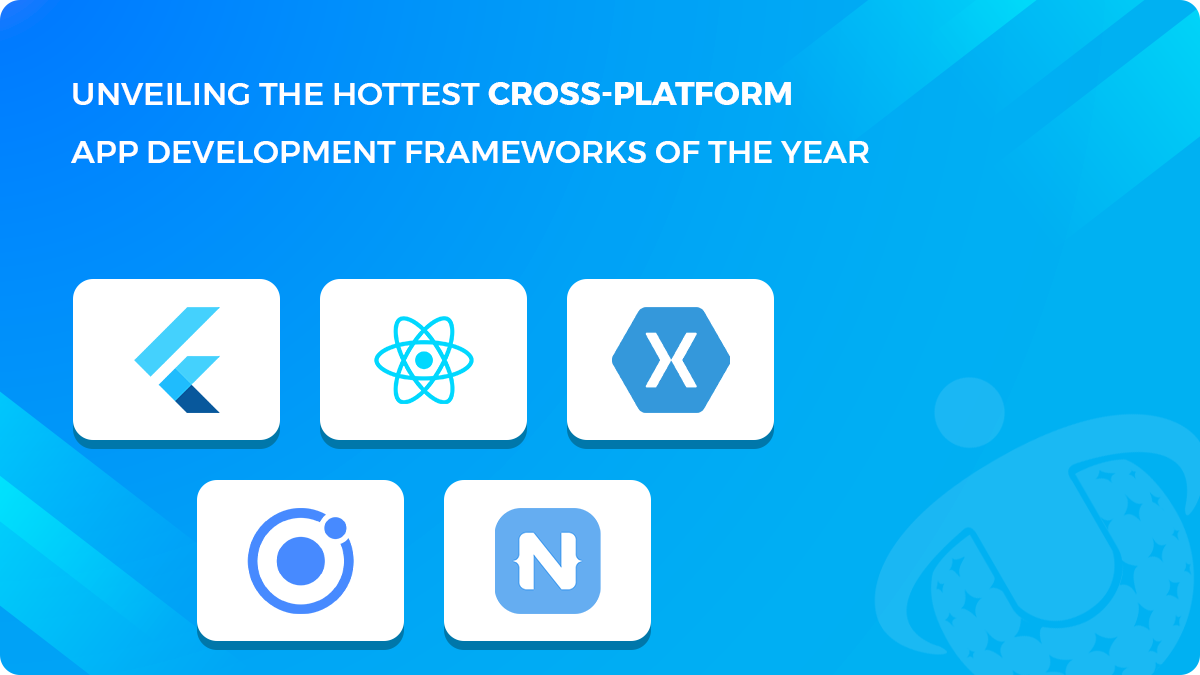In today’s hyper-connected world, where smartphones have become an extension of our daily lives, businesses recognize the pivotal role of mobile applications in their growth strategy. With consumers spending an increasing amount of time on their mobile devices, having a strong presence in the app market has become a necessity rather than a luxury. From e-commerce giants to local businesses, everyone is vying for attention in the digital space, making mobile app development a crucial aspect of their overall strategy.
However, the mobile landscape is highly fragmented, with a multitude of devices, operating systems, and screen sizes in the market. This fragmentation poses a significant challenge for businesses developing and maintaining apps across various platforms. Traditionally, developers had to build separate versions of their app for iOS and Android, doubling the development time, effort, and cost.

In today’s fast-paced digital landscape, where agility and speed are paramount, businesses cannot afford to ignore the benefits of cross-platform app development. These frameworks enable businesses to reach a wider audience by targeting users on different platforms simultaneously. Whether it’s iOS, Android, or even the web, cross-platform frameworks empower developers to build apps that can run seamlessly across all platforms, ensuring a consistent user experience regardless of the device.
Moreover, cross-platform app development frameworks streamline the development process, allowing developers to write code in a single language and reuse it across platforms. This not only saves time and effort but also reduces the complexity of managing multiple codebases. With a single codebase to maintain, developers can focus their efforts on adding value to the app and delivering a superior user experience.
Another significant advantage of cross-platform app development frameworks is their ability to leverage the native capabilities of the underlying platform. While hybrid frameworks offer a unified development approach, they often compromise on performance and user experience. Cross-platform frameworks, on the other hand, enable developers to access native APIs and features, ensuring that their apps deliver the same level of performance and functionality as native apps.
In this blog post, we’ll delve into some of the hottest cross-platform app development frameworks of the year and explore their key features, benefits, and use cases. From Google’s Flutter to Facebook’s React Native, we’ll take a closer look at how these frameworks are revolutionizing the way developers build and deploy mobile apps. So, whether you’re a seasoned developer looking to stay ahead of the curve or a business owner aiming to expand your digital footprint, buckle up as we embark on a journey into the world of cross-platform app development.
1. Flutter:
Flutter, developed by Google, is gaining immense popularity among developers for its fast development cycles, expressive UI, and native performance. Built using the Dart programming language, Flutter allows developers to create beautiful, natively compiled applications for mobile, web, and desktop from a single codebase. Its hot reload feature enables real-time updates to the app’s code without the need for recompilation, making the development process incredibly efficient. With a rich set of customizable widgets and extensive support for plugins, Flutter is ideal for building visually stunning and feature-rich cross-platform apps.
2. React Native:
React Native, maintained by Facebook, is another widely used cross-platform app development framework renowned for its efficiency, performance, and robust community support. Leveraging the power of JavaScript, React Native enables developers to build native-like mobile applications for iOS and Android using familiar web development technologies. Its component-based architecture and declarative UI paradigm simplify the development process and allow for rapid iteration. With a vast ecosystem of libraries and tools, React Native empowers developers to create highly interactive and responsive apps that deliver a seamless user experience across different platforms.
Read more: Behind the Scenes: A Day in the Life of a Mobile App Developer
3. Xamarin:
Xamarin, acquired by Microsoft, is a powerful cross-platform app development framework that enables developers to build native apps for iOS, Android, and Windows using C#. With Xamarin, developers can share a significant portion of their codebase across platforms, thereby reducing development time and effort. Its robust integration with Visual Studio and Azure enables seamless development, testing, and deployment of apps across various platforms. Xamarin.Forms, a UI toolkit included in Xamarin, allows developers to create shared UI code and design native user interfaces for different platforms, providing a consistent look and feel across devices.
4. Ionic:
Ionic is an open-source cross-platform app development framework that combines web technologies such as HTML, CSS, and JavaScript to build high-performance mobile and progressive web apps. With Ionic, developers can leverage a single codebase to create apps that run smoothly on iOS, Android, and the web. Its UI components and pre-designed templates facilitate rapid app development, while its built-in support for Angular, React, and Vue.js simplifies integration with popular frontend frameworks. Additionally, Ionic’s native-like UI elements and extensive plugin ecosystem enable developers to create visually appealing and feature-rich apps with ease.
Read more: Behind the Scenes: A Day in the Life of a Mobile App Developer
5. NativeScript:
NativeScript, powered by Progress, is a cross-platform app development framework that allows developers to build truly native mobile applications using JavaScript, TypeScript, or Angular. By leveraging native APIs, NativeScript enables developers to access device-specific features and deliver a superior user experience. Its declarative UI syntax and Hot Module Replacement (HMR) feature streamline the development process and enable real-time updates to the app’s codebase. With support for Angular and Vue.js, NativeScript offers flexibility and versatility, making it an ideal choice for building high-performance cross-platform apps.
In conclusion, the landscape of cross-platform app development frameworks is continuously evolving, with new tools and technologies emerging to meet the ever-growing demands of the industry. Whether you’re a seasoned developer or just starting, exploring these hottest frameworks can help you stay ahead of the curve and build innovative, cross-platform apps that delight users and drive business growth. So, roll up your sleeves, dive into these frameworks, and unleash your creativity to develop the next big thing in the world of mobile apps!
